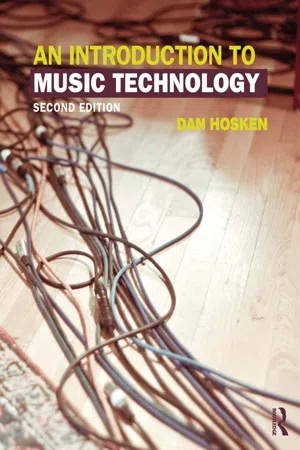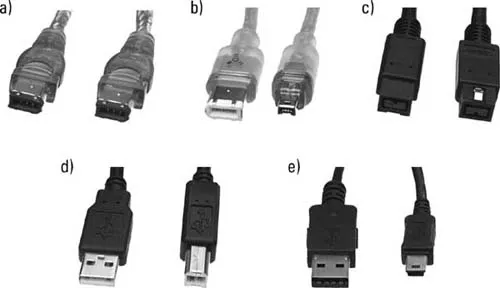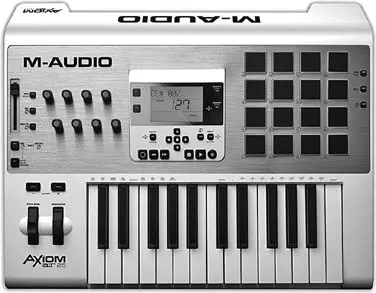
- 382 pages
- English
- ePUB (mobile friendly)
- Available on iOS & Android
An Introduction to Music Technology
About this book
An Introduction to Music Technology, Second Edition provides a clear overview of the essential elements of music technology for today's musician. This book focuses on the topics that underlie the hardware and software in use today: Sound, Audio, MIDI, Computer Notation, and Computer- Assisted Instruction. Appendices cover necessary computer hardware and software concepts. Written for both music technology majors and non-majors, this textbook introduces fundamental principles and practices so students can learn to work with a wide range of software programs, adapt to new music technologies, and apply music technology in their performance, composition, teaching, and analysis.
Features:
- Thorough explanations of key topics in music technology
- Content applicable to all software and hardware, not linked to just one piece of software or gear
- In-depth discussion of digital audio topics, such as sampling rates, resolutions, and file formats
- Explanations of standard audio plug-ins including dynamics processors, EQs, and delay based effects
- Coverage of synthesis and sampling in software instruments
- Pedagogical features, including:
- Further Reading sections that allow the student to delve deeper into topics of interest
- Suggested Activities that can be carried out with a variety of different programs
- Key Terms at the end of each chapter
- What Do I Need? Chapters covering the types of hardware and software needed in order to put together Audio and MIDI systems
- A companion website with links to audio examples that demonstrate various concepts, step-by-step tutorials, relevant hardware, software, and additional audio and video resources.
The new edition has been fully updated to cover new technologies that have emerged since the first edition, including iOS and mobile platforms, online notation software, alternate controllers, and Open Sound Control (OSC).
Frequently asked questions
- Essential is ideal for learners and professionals who enjoy exploring a wide range of subjects. Access the Essential Library with 800,000+ trusted titles and best-sellers across business, personal growth, and the humanities. Includes unlimited reading time and Standard Read Aloud voice.
- Complete: Perfect for advanced learners and researchers needing full, unrestricted access. Unlock 1.4M+ books across hundreds of subjects, including academic and specialized titles. The Complete Plan also includes advanced features like Premium Read Aloud and Research Assistant.
Please note we cannot support devices running on iOS 13 and Android 7 or earlier. Learn more about using the app.
Information
APPENDIX 1
Computer Hardware
INPUTS AND OUTPUTS
Standard Input and Output Hardware
Music Input and Output Hardware




| Table A1.1 Some inputs and outputs for computers | |||
| Regular input | Musical input | Regular output | Musical output |
| Computer keyboard | Microphone | Monitor | Speakers/headphones |
| Mouse | Audio interface | Printer | Audio interface |
| Touchscreen | USB controller | Speakers | USB module |
| Camera | USB synthesizer | Physical feedback | USB synthesizer |
| Microphone | MIDI interface | MIDI interface | |
| Game controllers | Alternate MIDI controllers | MIDI and sound controlled devices | |
| Pressure sensors | Game controllers | ||
| Cell phones | |||
PROCESSING
Table of contents
- Cover Page
- Half Title Page
- Title Page
- Copyright Page
- Table Of Contents
- List of Illustrations
- Preface
- Introduction
- Section I: Sound
- Section II: Audio
- Section III: MIDI and Software Instruments
- Section IV: Computer Notation and Computer-assisted Instruction
- Appendix 1 and 2: Further Reading
- Selected Bibliography
- Index